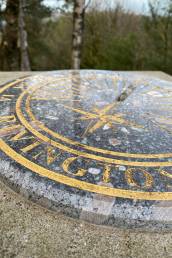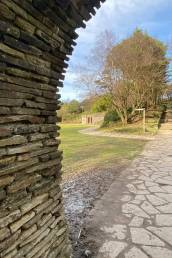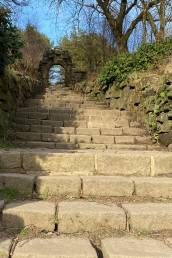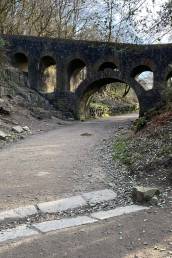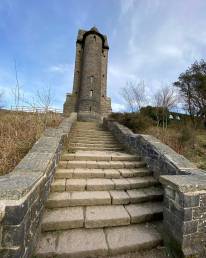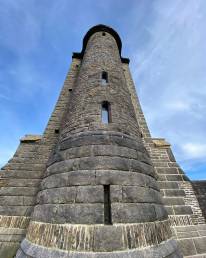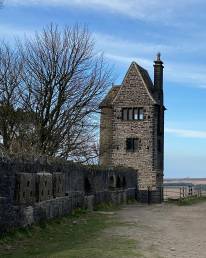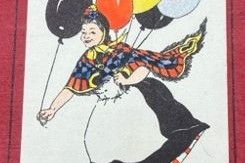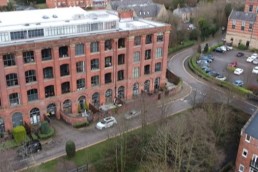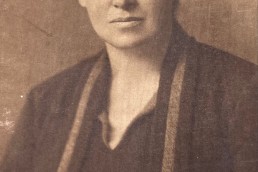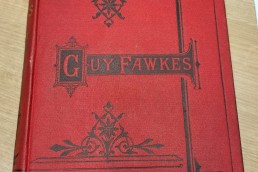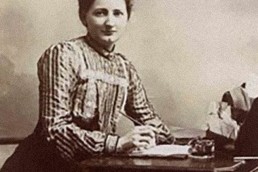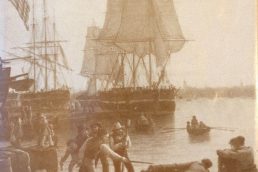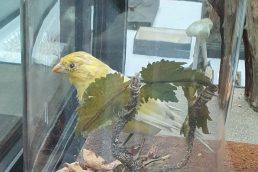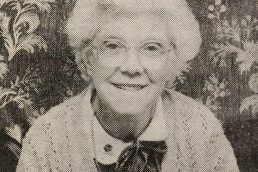In the shadow of Rivington Pike, aside a lonely moor side there lies a wooded oasis of lush green trees, liberally peppered and dotted with stone summerhouses, bridges and rock pathways, even a lookout tower. This is one of the lasting legacies of the noted Victorian industrialist Lord Leverhulme; informed by Thomas Mawson's biography and M. D. Smith's work, Leverhulme's Rivington, I will explain the story behind these magical gardens.
In the 1890s, the occupiers of the Rivington Hall Estate decided to seek a new buyer. The estate was a substantial one that consisted of over two thousand acres of land, which included the Pike itself and two Anglo Saxon tithe barns. In addition, there were a small number of farmstead holdings, with the Manorial seat itself, Rivington Hall. The Crompton family, who were in residence, instructed a local solicitor firm to handle the potential sale on their behalf. The price was set at £70k with a caveat that the Crompton family could remain in residence as tenants in Rivington Hall themselves for an agreed annual rental. During January 1900, Lord Leverhulme instructed a solicitor’s firm based in Wood Street Bolton (his birthplace) to negotiate the purchase of the Rivington Estate; the potential purchaser was in fact kept secret from the Crompton family to increase the bargaining power (it was thought the family would hold out for the full asking price if the purchaser’s identity was revealed as Leverhulme could well afford to pay in full). Thus, an opening bid was made of £40,000. This was swiftly rejected. Following this, further negotiations were made and eventually Leverhulme had a bid of £60,000 accepted. In March 1900, Leverhulme became the Baron of Rivington Manor. The Crompton family remained in residence at Rivington Manor itself with a per annum rent of £100.
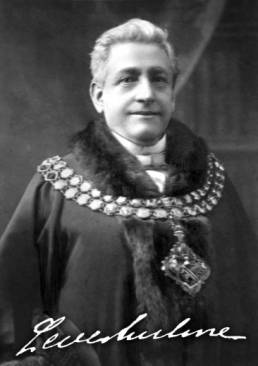

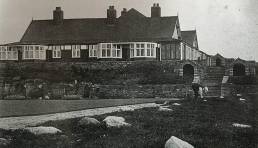

Leverhulme’s agreement to the tenancy caveat meant he already had a plan to build an alternative property. To that end the Portable Building Company of Manchester were instructed to build a wooden sectional bungalow on the contour of the moor itself. The site was chosen because of Leverhulme’s affection for the moor: it was a popular picnic location during his engagement to his wife. Indeed, there is some speculation that his proposal of marriage was made in this location. The construction of the house was a temporary one, with an idea that the house itself would be replaced or relocated once the grounds had been established.
A quirk of fate then brought Leverhulme in touch with Thomas Mawson, the renowned landscape and garden designer. Leverhulme wrote to Mawson to ask for help with the gardens: ‘I have wanted to consult you for the last two years, but all my friends warned me it would be useless, as you never worked for anyone holding less social rank than a Duke, whereas I am only a poor and indigent soap-maker’ (cited by Smith, 1984, p.61). Mawson met with Leverhulme and was readily impressed at the latter’s drive and commitment to make something special. Indeed, Leverhulme presented Mawson with his vision of how the grounds should look. Mawson in his biography The Art and Craft of Garden Making described these as ‘remarkable’ (Mawson, 1912, p.99); Mawson recalled that the estate was a ‘planners dream’ (Mawson, 1912, p.99), affording vast scope for individual expression (the frames of reference from Leverhulme being that the ‘gardens should be laid out in perfect keeping with their environment’ (Mawson, 1912, p.99)).
The partnership between the men was a fruitful one, the gardens were laid out between 1906 and 1922, with the addition of the Japanese lake in 1924.
During 1901, Leverhulme made an offer to give a portion of his land at Rivington to the people of Bolton and in making the offer to do so, hoped to landscape this and donate it as formally as Lever Park. To this end, the offer was accepted on behalf of the people of Bolton. However, Liverpool Corporation objected as the whole of the estate fell within the watershed of the reservoirs which supplied Liverpool with water. On May 1st 1902, the Corporation were granted a compulsory purchase order for the Rivington Estate minus forty-five acres of Leverhulme’s Home and Gardens and the portion that Leverhulme had already given away to the people of Bolton as Lever Park. Liverpool Corporation were forced to pay compensation to Leverhulme for the other land; this figure was set at £120,000, double the initial purchase price.
In July 1913 the original house was destroyed by Edith Rigby, a Preston-based suffragette. She ascertained that no one was in residence in the property before breaking several windows and setting several fire points alight with paraffin. The wooden bungalow was quickly destroyed. A note left at the scene read ‘Lancashire’s message to the King, votes for women due’ (cited by Smith, 1984, p.44). Rigby gave herself up to the police, and on July 10th 1913, the Manchester Evening News reported that Rigby stated from the dock:
‘I want to ask Sir William Lever [Leverhulme] whether he thinks his property on Rivington Pike is more valuable as one of his superfluous homes occasionally to be opened to people, or as a beacon lighted for King and Country, to see that here are some intolerable grievances for women’ (cited by Smith, 1984, p.44).
The destruction of the house was ironic given that Leverhulme was a liberal who actively supported women’s right to vote. Leverhulme’s beloved wife died unexpectedly during the same month and Leverhulme was left bereft, vowing to replace the wooden structure with something substantial that was more becoming of the gardens that now surrounded it. The replacement house made solidly of Lancashire Stone also included Pergolas or walkways that surrounded the home to shield the worst of the weather from the house. The house and grounds continued to be improved and remodelled until the death of Leverhulme in 1925.
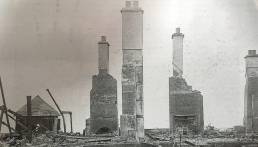

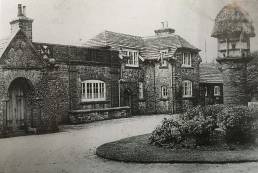

Leverhulme’s son, the second Viscount Leverhulme did not have the same attachment to the house and in November 1925, the house and contents were auctioned off separately. The house and grounds were purchased for £15,000 with the contents being purchased for £10,000 by John Magee of Magee, Marshall Brewers of Bolton. No improvements or major changes were made to the Home and grounds during Magee’s ownership. John Magee died in 1939. There was a suggestion that the combined local authorities should purchase the House and grounds, secure the property forever for the benefit of local people. A committee was formed, with the house and grounds offered to the group for £7,000. Liverpool Corporation imposed a condition that the house should not be used for any other purpose than a dwelling house; effectively reducing the future use of the house. Bolton Parks committee walked away from the deal, leaving Liverpool Corporation to purchase the House and grounds for a derisory sum of £3,000, the only remaining offer. During the Second World War the house and ballroom were used as a billet for troops. Cosmetic damage made during this period was later cited by Liverpool Corporation as one of the reasons for the demolition of the house.
Thus, in May 1947, Liverpool Corporation announced that the Bungalow would be demolished as the house was a menace to the water supply. Leverhulme had built the house to last, so to level the substantially built house was no easy task. The grounds were left to rot and decay to nature. During the 1980s the Tower, Summerhouse and Bridge were allocated grade II listed status, with several half-hearted attempts made to preserve the remaining heritage. However, this changed during 2017, when the Rivington Terraced Gardens Trust managed to secure a lottery grant with the aim of sympathetically restoring and preserving the structures and grounds itself. Their amazing work so far has managed to turn back time so that future generations can delight and marvel at this wonderful place.
Bibliography
Winckley Square. (2021) Edith Rigby | Winckley Square. [Online] Available at: <https://www.winckleysquarepreston.org/heritage/edith-rigby/> [Accessed 27 March 2021].
Boltonsmayors.org.uk. (2021) Lord Leverhulme (William Hesketh Lever). [Online] Available at: <http://www.boltonsmayors.org.uk/lever-w-h.html> [Accessed 27 March 2021].
Mawson, T., (1912) The art & craft of garden making. London: Methuen.
Historicengland.org.uk. (2021) RIVINGTON GARDENS, Rivington – 1000950 | Historic England. [Online] Available at: <https://historicengland.org.uk/listing/the-list/list-entry/1000950> [Accessed 27 March 2021].
Smith, M., (1984) Leverhulme’s Rivington. Chorley, Lancashire: Nelson Brothers Printers.
Rivingtonterracedgardens.org.uk. (2021) The Bungalow – Rivington Terraced Gardens. [Online] Available at: <https://www.rivingtonterracedgardens.org.uk/what-to-see-and-do/the-bungalow/> [Accessed 27 March 2021].
Bibliography
Colby, Robert A. (1985) “Tale Bearing in the 1890s: The Author and Fiction Syndication”. Victorian Periodicals Review. Vol.18, No.1, pp. 2-16.
Hilliard, Christopher (2009) “The Provincial Press and the Imperial Traffic in Fiction, 1870s-1930s”. Journal of British Studies. Vol.48, No.3, pp. 653-673.
Johanningsmeier, Charles (1995) “Newspaper Syndicates of the Late Nineteenth Century: Overlooked Forces in the American Literary Marketplace”. Publishing History. Vol. 37, No.1, pp. 61-82.
Jones, Aled (1984) “Tillotson’s Fiction Bureau: The Manchester Manuscripts”. Victorian Periodicals Review. Vol.17, No.1, pp. 43-49.
Singleton, Frank (1950) Tillotson’s 1850-1950: Centenary of a Family Business. Bolton: Tillotson & Son Ltd.

